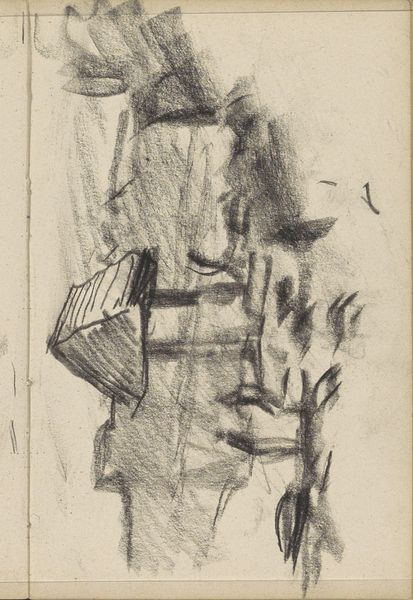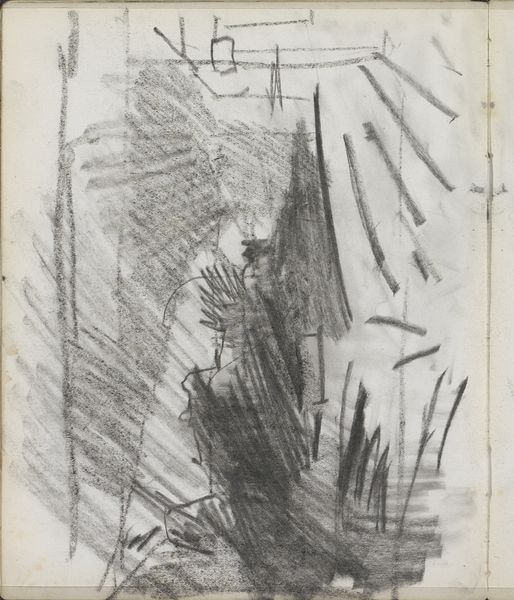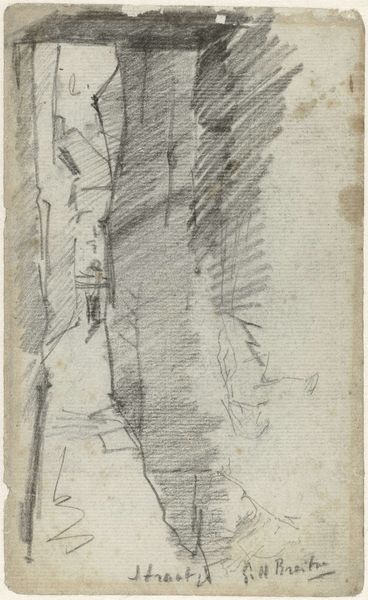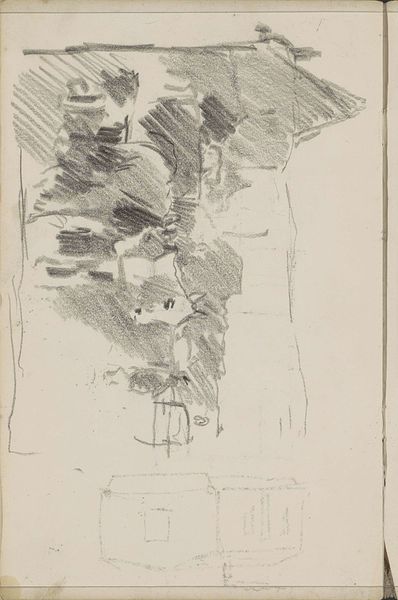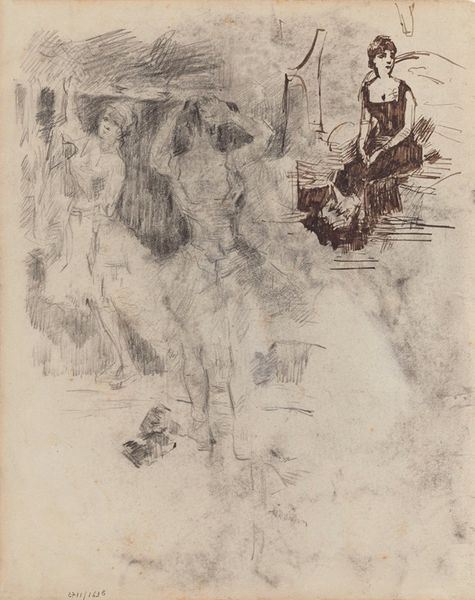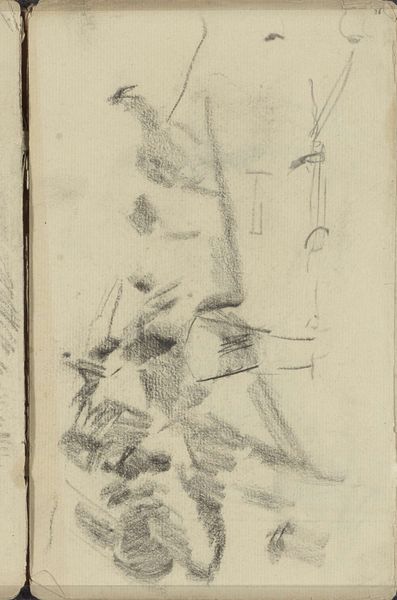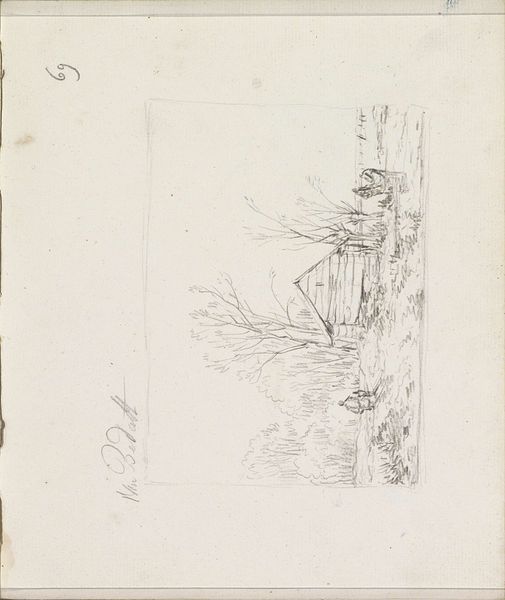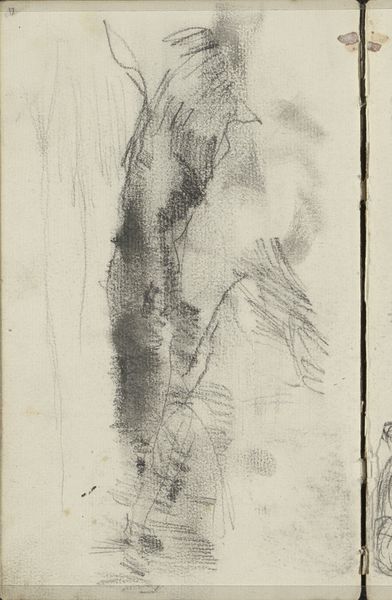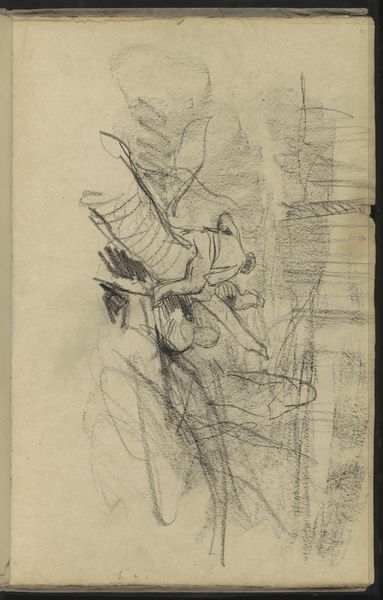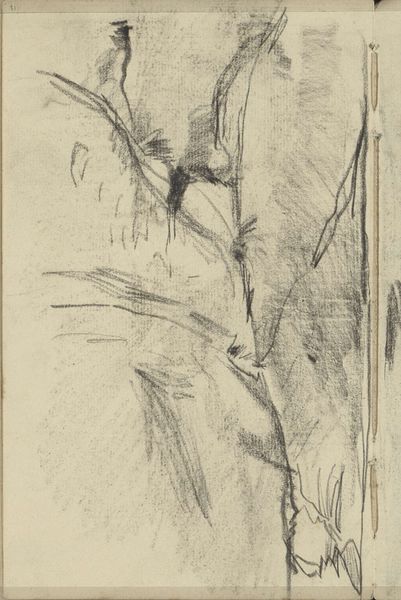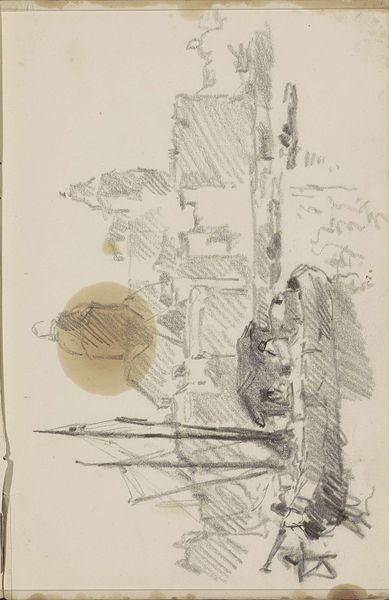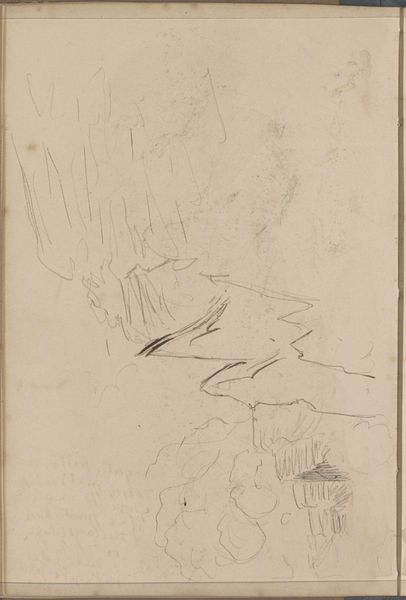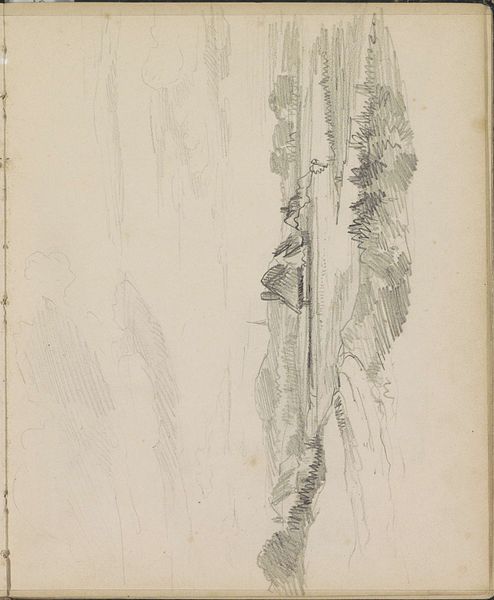
drawing, paper, pencil, graphite
#
portrait
#
drawing
#
impressionism
#
paper
#
pencil
#
graphite
Copyright: Public Domain: Artvee
Editor: Here we have James Ensor’s 1883 drawing, “Snuisterijen en figuren,” rendered in graphite and pencil on paper. It feels quite scattered, like a preparatory sketch page perhaps, and it’s difficult to determine what he was aiming for. How do you interpret this work? Curator: This drawing provides insights into Ensor's working methods and the material culture that surrounded him. Consider the use of graphite and pencil – readily available, relatively inexpensive materials that facilitated rapid sketching and experimentation. This aligns with the increasing accessibility of art-making materials during the late 19th century due to industrialization. Editor: So you’re less focused on the specific forms represented? Curator: The "snusterijen," or trinkets, themselves are key. These were mass-produced objects that flooded the market during this period, reflecting new patterns of consumption and the rise of the bourgeoisie. Ensor's rendering of these figures, however incomplete, suggests a commentary on this culture of mass production. Look at the layering, the overlapping marks; do they suggest an ambivalence toward these objects? Editor: Perhaps. It's almost as if he’s overwhelmed by them, or even trying to deconstruct them with the drawing itself. Curator: Exactly! He’s almost breaking down the commodification of art and everyday objects via the very materials and processes he’s using. What appears "scattered" could be interpreted as a visual critique of the era's material excess, an implicit investigation of production, labor, and value itself. Editor: I hadn't considered it that way, focusing on how the availability of these inexpensive materials could be used to make social commentary in itself. Thank you for helping me look at this in a new way!
Comments
No comments
Be the first to comment and join the conversation on the ultimate creative platform.

